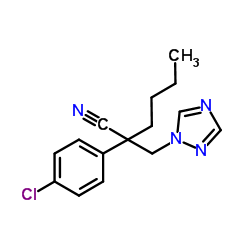California Supreme Court Finds Duty in Take Home Exposure Cases
By Shari Weintraub, San Diego and Jaimie Buchbinder, Oakland on December 5, 2016
 On December 1, 2016, the California Supreme Court ruled that premises owners and employers owed a duty to prevent take-home asbestos exposure to those in an employee’s household. The court declined to carve out an exception to the general duty imposed by California statute (Civ. Code, § 1714) on every person to exercise reasonable care for the safety of others. While the decision does not specifically cover take-home claims against product manufacturers, the rationale of the decision suggests that they too will be subject to take-home liability. Recognizing a duty to bystanders will expand the class of persons who may pursue employers and premises owners for asbestos exposure claims. The court found no inconsistency with its opinion and a number of other jurisdictions that have a “no duty” rule. One distinguishing fact is that by the time exposure is alleged to have occurred in the 1970’s information and regulations regarding the dangers of take-home exposure would have been generally known to employers and premises owners, as the result of 1972 OSHA regulations and otherwise.
On December 1, 2016, the California Supreme Court ruled that premises owners and employers owed a duty to prevent take-home asbestos exposure to those in an employee’s household. The court declined to carve out an exception to the general duty imposed by California statute (Civ. Code, § 1714) on every person to exercise reasonable care for the safety of others. While the decision does not specifically cover take-home claims against product manufacturers, the rationale of the decision suggests that they too will be subject to take-home liability. Recognizing a duty to bystanders will expand the class of persons who may pursue employers and premises owners for asbestos exposure claims. The court found no inconsistency with its opinion and a number of other jurisdictions that have a “no duty” rule. One distinguishing fact is that by the time exposure is alleged to have occurred in the 1970’s information and regulations regarding the dangers of take-home exposure would have been generally known to employers and premises owners, as the result of 1972 OSHA regulations and otherwise.
The court’s ruling came in two consolidated companion cases. In Kesner, plaintiff alleged he was exposed to asbestos when he spent an average of three nights per week at his uncle’s house in the 1970’s. His uncle, an employee of Pneumo Abex, LLC (“Abex”), worked in a plant where brake shoes were manufactured with asbestos fibers that were released during the manufacturing process, and it was alleged that the uncle brought the fibers home on his work clothes. Plaintiff was diagnosed with mesothelioma and he sued Abex. The Kesner appellate court reversed Abex’ nonsuit based upon prior California holding (Campbell v. Ford Motor Co.) that the employer had no duty to a bystander. In the companion case Haver, the decedent’s heirs claimed decedent was exposed to asbestos by her former husband, who was allegedly exposed to asbestos from pipe insulation and other tools while employed as a fireman and hostler in the early 1970’s. Decedent was diagnosed with mesothelioma. The Haver appellate court affirmed the trial court’s order sustaining defendant’s demurrer, relying upon Campbell and distinguishing Kesner on the ground that Kesner sounded in negligence whereas the Havers’ claims rested on a premises liability theory.
The Supreme Court held that in both instances, a reasonable employer should have known that asbestos presented risk of harm in the workplace and that it was foreseeable its employees would travel outside the workplace, particularly to their homes. “The relevant intervening conduct here – that workers returned home at the end of the day and, without adequate precautions, would bring asbestos dust home – is entirely foreseeable.” Thus, the exposure was foreseeable and duty attached.
The court did, however, limit the duty to “household” members, and not just anyone with whom a worker might come into contact (e.g. carpools, restaurant workers, or bus passengers). “We hold that an employer’s or property owner’s duty to prevent take-home exposure extends only to members of a worker’s household, i.e., persons who live with the worker and are thus foreseeably in close and sustained contact with the worker over a significant period of time.” The court stopped short of limiting the duty to “immediate family members” and instead applied it to “household members”, an acknowledgement of bonds which may be found in non-traditional and quasi-familial living arrangements. The court also explicitly acknowledged that “… a finding of duty is not a finding of liability. To obtain a judgment, a plaintiff must prove that the defendant breached its duty of ordinary care and that the breach proximately caused the plaintiff’s injury and the defendant may assert defenses and submit contrary evidence on each of these elements.”


